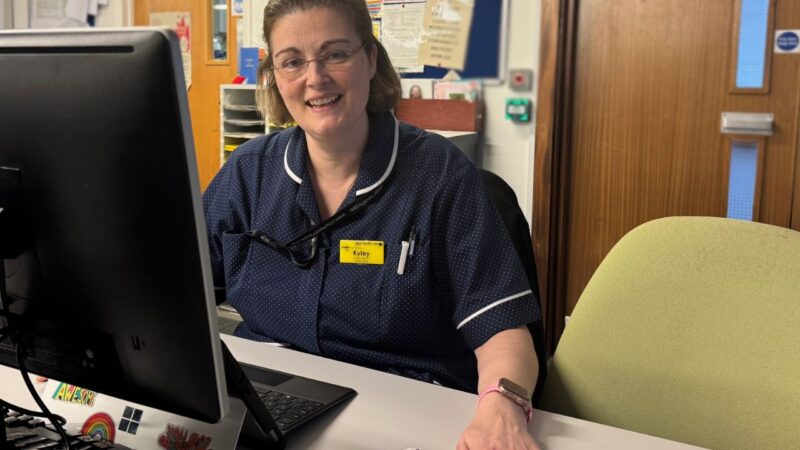Kyley Parfitt is a district nurse team leader, working for community service provider Your Healthcare CIC in Kingston. While her role involves scheduled visits to patients at home, she is also part of a rapid response team, reacting to urgent community response calls as needed.
Meet Kyley
Tell us about your role
I’m a district nurse, part of a team providing care for a range of conditions. I also work with the two-hour rapid response team, made up of different clinicians; OTs, physios, advanced practitioners – nurses and paramedics. We get referrals from NHS 111 and the ambulance service.
Who else do you work with?
Community matrons form part of the team. They manage chronic diseases such as heart failure and COPD. If those patients come through to us because of possible exacerbation of their condition, the community matron will visit that day. We also provide urgent support for care homes.
What sort of urgent calls do you respond to?
We’re called out for UTIs, catheter care, chest infections, wound care and falls. Think of us as a ward with no walls because, to be honest, there’s nothing that comes in that we don’t adapt to.
A big part of our day is palliative care. For example, I went on a visit which should have been quite routine but when I came into the property I realised that the lady was agitated and entering the end of her life. So we contacted the GP, did a prescription for medication to control her agitation and her pain and were back there within two hours. Having a fast-turnaround, 24-hour nursing service meant she could pass away peacefully at home, as was her choice. We always say in our job we only have one chance to get that right.
What are the big challenges when winter comes around?
It’s often about the type of illnesses you get – there are more chest infections. Hospitals are under more pressure so we do a lot of the work to keep people out of the emergency department, if they can be cared for at home. They’re seen, assessed and diagnosed in the community then referred on and treated in the community.
Give us an example of your work in practice?
A gentleman had a burn to the hand and called an ambulance. The paramedics saw to the wound but he needed our help because he had a catheter. During the visit we picked up a lot of other problems. We realised he wasn’t managing at home, so we made a social services referral. He was struggling to get in and out of bed and on and off the chair, so then it was about putting in equipment to help with that.
We’re a multidisciplinary team working to ensure that we get the best person to that patient. In many cases we make sure people don’t have to be admitted to hospital – they can stay in their own home, in a familiar environment where the chances are they will recover more quickly.
Have you always worked in the NHS? What’s been your journey?
I went from school to a health and social care course at college and then straight into nursing and qualified aged 21. I did 11 months in a hospital but I always knew I wanted to care for patients in their own homes. I wanted to build a rapport with them and their families, and I wanted to make a difference. I have been in the community ever since, that’s 24 years. In 2016 I went back to university to get a specialist practice degree – so I could provide more holistic care and manage a team and a caseload.
What would you like to be different about the NHS in 10 years’ time?
I’d like more investment in the community because I think more care will be shifted here – it is already happening with telemedicine where people are monitored remotely. We also need more palliative care nurses to provide more, rapid care for those patients.
There are 100s of things the NHS and social care organisations in south West London are doing to help people stay well this winter – we’re sharing 10 points from the winter plan.
